If you buy via any of our links, there will be no additional cost to you, and we will receive a tiny commission. More information is available on our Affiliate Disclosure page.
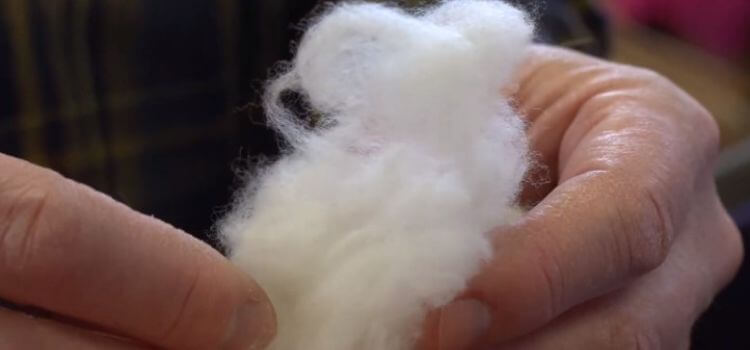
Is Merino Wool Good for Hot Weather?
Is merino wool good for hot weather? Amazingly, yes! Natural breathability and moisture-wicking elements keep it cool even in hot conditions.
Merino wool, which is generally praised for its warmth and insulating capabilities, may not be the first choice for hot weather. This extraordinary natural fiber, on the other hand, possesses unique properties that can make it surprisingly ideal for warm-weather circumstances.
In this investigation, we will look at the qualities of Merino wool that make it a feasible alternative for staying relaxed and comfortable when the temperatures rise.
Whether you’re planning a hot summer day or a tropical excursion, knowing the benefits of Merino wool in hot weather will help you make intelligent clothing selections.
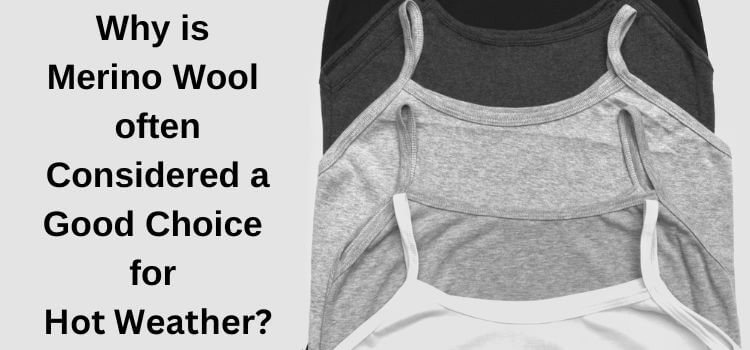
Why is Merino Wool often Considered a Good Choice for Hot Weather?
Merino wool is frequently regarded as an excellent choice for hot weather due to its distinct characteristics that help to comfort and performance in hot and sunny situations. Here are the main reasons why Merino wool is famous in hot weather:
Breathability:
Because of its fine threads and unique structure, merino wool is naturally breathable. It helps air to circulate over your body, avoiding heat buildup. This breathability aids in body temperature regulation and keeps you cool and comfortable even in hot conditions.
Moisture-Wicking:
Merino wool has outstanding moisture-wicking qualities. It can absorb moisture (such as perspiration) and transport it away from your skin to the fabric’s outside surface, where it can evaporate. In hot, steamy conditions, this moisture management keeps you dry and decreases the danger of discomfort and chafing.
Temperature Control:
Merino wool is an excellent natural thermostat. It adjusts to the needs of your body by releasing surplus heat when it’s hot and trapping heat when it’s cold. This temperature regulation keeps you comfortable in a variety of weather circumstances.
UV Shielding:
Merino wool, due to its thick structure and natural colors, provides some UV protection. While not a replacement for sunscreen, Merino wool clothing can help shield your skin from the sun’s harmful UV rays, making it appropriate for sunny and exposed areas.
Resistance to Odors:
Merino wool is naturally odor-resistant. Its formula inhibits the formation of odor-causing germs, letting you stay fresh even when sweating profusely in hot weather. Merino wool clothes are great for lengthy outdoor activities due to their odor resistance, which lowers the need for regular washing.
Lightweight and Breathable:
Merino wool textiles are frequently lightweight and soft, making them ideal for wearing in hot weather. They drape well and do not cling to the skin, increasing comfort in hot weather.
Rapid Drying:
When compared to other textiles, merino wool dries relatively quickly. This characteristic is helpful in remaining comfortable during and after activities involving sweating or exposure to water.
Versatility:
Merino wool can be used for a wide range of clothing, from lightweight T-shirts to summer dresses and activewear. Its versatility allows you to build a hot-weather wardrobe that combines style and functionality.
Sustainable and Natural:
Merino wool is a natural and renewable fiber. It aligns with eco-conscious values and offers an environmentally friendly option for hot-weather clothing. When cared for properly, Merino wool garments can have a long lifespan, reducing the need for frequent replacements.
Merino wool’s breathability, moisture-wicking, temperature-regulating, UV-protective, and odor-resistant properties, combined with its comfort and sustainability, make it an excellent choice for hot weather. Whether you’re hiking under the sun, enjoying a summer picnic, or simply seeking comfort in high temperatures, Merino wool can help you stay relaxed and comfortable while embracing the outdoors.
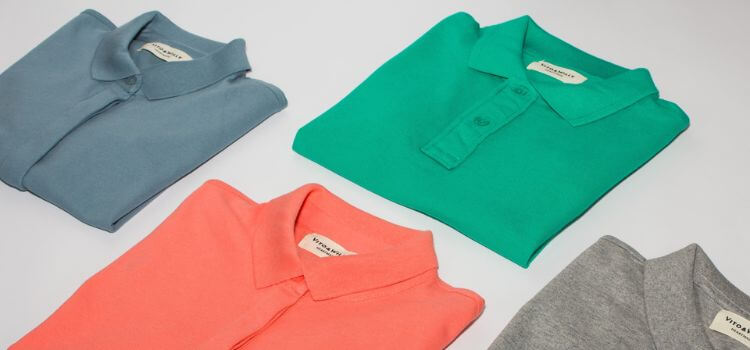
What are The Benefits of Wearing Merino Wool in Hot Weather?
Wearing Merino wool in hot weather offers a range of benefits that contribute to comfort, performance, and overall well-being. Despite its reputation as a warm and cozy material, Merino wool’s unique properties make it a surprisingly suitable choice for staying relaxed and comfortable when temperatures rise. Here are the key benefits of wearing Merino wool in hot weather:
Allowing Air:
Merino wool is naturally breathable, allowing air to circulate around your body. This breathability prevents heat and moisture from getting trapped against your skin, helping you stay cool and dry even in sweltering conditions.
Absorb Sweat:
The moisture-wicking ability of Merino wool is exceptional. It can absorb sweat and moisture, moving it away from your skin and allowing it to evaporate. This moisture management helps prevent discomfort, chafing, and the “clammy” feeling associated with other fabrics.
Retains Heat:
Merino wool acts as a natural thermostat. It releases excess heat when it’s warm and retains
heat when it’s cooler, keeping your body temperature in a comfortable range regardless of external conditions.
Additional Layer:
Merino wool provides inherent UV protection due to its dense structure and natural pigments. While it’s not a substitute for sunscreen, clothing made from Merino wool can offer an additional layer of defense against the sun’s harmful rays.
Naturally Resistant:
Merino wool is naturally resistant to odors. It discourages the growth of odor-causing bacteria, allowing you to stay fresh even during extended periods of activity in hot weather.
Dries Relatively:
Merino wool dries relatively quickly compared to other materials. This feature is especially beneficial when you’re sweating or have come into contact with water, as it helps you stay comfortable and dry.
Drapes Well:
Despite its warmth-retaining capabilities, Merino wool is soft and comfortable to wear, even in hot weather. It drapes well and doesn’t cling to your skin, enhancing your overall comfort.
Wide Range:
Merino wool garments are versatile and suitable for a range of activities and occasions. From casual outings to outdoor adventures, you can find Merino wool clothing that meets your needs while keeping you comfortable.
Sustainable Choice:
Merino wool is a renewable and biodegradable material that aligns with sustainability goals. Choosing Merino wool supports responsible textile production and reduces your environmental footprint.
Reduced Washing:
Due to its odor resistance, Merino wool garments require less frequent washing compared to other fabrics. This not only saves time and effort but also extends the life of your clothing.
Style and Performance:
Merino wool blends style with performance. You can enjoy the benefits of this natural fiber without compromising on aesthetics, making it a practical choice for both active and leisurely pursuits.
The benefits of wearing Merino wool in hot weather encompass breathability, moisture-wicking, temperature regulation, UV protection, odor resistance, quick drying, comfort, versatility, sustainability, reduced washing, and a blend of style and performance. By harnessing the unique properties of Merino wool, you can stay relaxed, comfortable, and confident as you embrace the joys of summer and warmer climates.
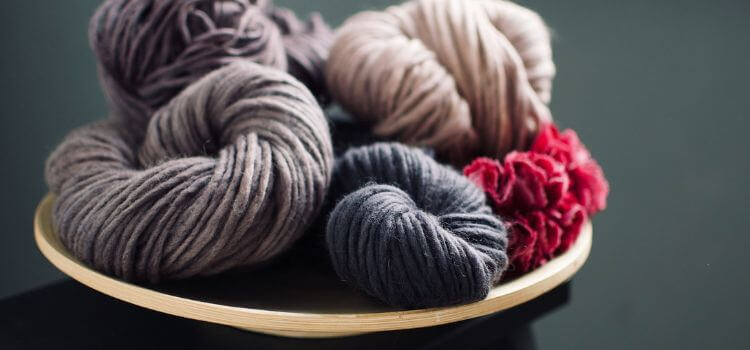
What are the Properties of Merino Wool that Make it Suitable for Hot Weather?
Merino wool’s suitability for hot weather is attributed to several fundamental properties that work together to provide comfort and performance in warm and sunny conditions. These properties make Merino wool a favored choice for staying relaxed and comfortable when the temperatures rise:
Feeling Refreshed:
Merino wool is naturally breathable due to its delicate fibers and unique structure. It allows air to circulate close to the skin, preventing the build-up of heat and moisture. This breathability helps regulate body temperature and keeps you feeling refreshed.
Moisture Management:
The moisture-wicking properties of Merino wool are exceptional. It can absorb moisture (such as sweat) and move it away from the skin to the outer surface of the fabric, where it can evaporate. This moisture management helps prevent discomfort and keeps you dry.
Cooler:
Merino wool acts as a natural thermostat. It releases excess heat when it’s warm and retains warmth when it’s cooler. This adaptive quality ensures that your body remains at a comfortable temperature, regardless of external conditions.
Effective Barrier:
Merino wool offers inherent protection against the sun’s harmful ultraviolet (UV) rays. Its dense structure and natural pigments provide an effective barrier, making it a valuable addition to sun-exposed activities.
Discourages Growth:
Merino wool is naturally resistant to odors. Its composition discourages the growth of odor-causing bacteria, allowing you to stay fresh and confident even during extended periods of activity.
Swift Drying:
Merino wool dries relatively quickly compared to other fabrics. This property is beneficial for staying comfortable during activities that involve sweating or exposure to water.
Pleasure and Softness:
Merino wool is silky and pleasant to wear even in hot temperatures despite its insulating capabilities. It drapes well and does not irritate or create pain.
Allows Adaptability:
Merino wool is versatile and suitable for a wide range of clothing, from T-shirts and dresses to activewear. This adaptability allows you to maintain your personal style while benefiting from its functional qualities.
Environmentally Friendly:
Merino wool is a natural and renewable fiber that aligns with sustainability goals. It offers an environmentally friendly option for hot-weather clothing.
Require Less:
Thanks to its odor resistance, Merino wool garments require less frequent washing compared to other fabrics. This not only saves water and energy but also prolongs the life of your clothing.
Blends Style:
Merino wool blends style with performance. You can enjoy the benefits of this natural fiber without compromising on aesthetics, making it an excellent choice for both active pursuits and leisurely activities.
Merino wool’s breathability, moisture-wicking, temperature-regulating, UV-protective, odor-resistant, quick-drying, softness, versatility, sustainability, reduced washing needs, and the balance of style and performance collectively contribute to its suitability for hot weather. By harnessing these properties, you can confidently enjoy the outdoors while staying relaxed and comfortable.
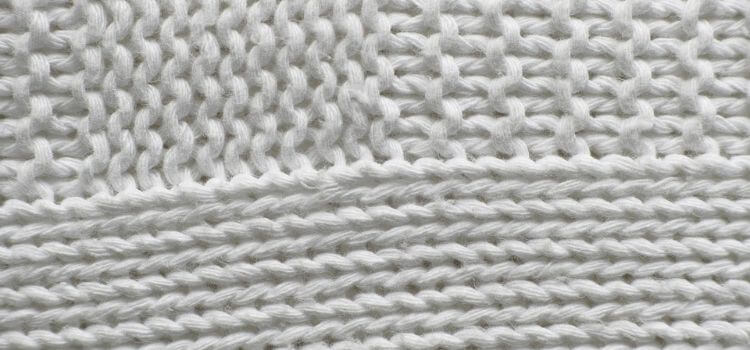
How Does Merino Wool Regulate Body Temperature?
Merino wool has a remarkable ability to regulate body temperature, making it an ideal choice for a wide range of weather conditions, including both hot and cold environments. This temperature-regulating property is due to the unique structure and composition of the wool fibers. Here’s how Merino wool regulates body temperature:
Insulating Air Pockets:
The structure of Merino wool fibers includes numerous small air pockets within the material. These air pockets act as natural insulators, trapping warm air close to the body in cold weather. When it’s hot, the air pockets allow excess heat to escape, preventing overheating.
Moisture-Wicking:
Merino wool is highly effective at wicking moisture away from the skin. When you sweat, the wool absorbs the water and moves it to the outer surface of the fabric. This moisture then evaporates, cooling your body in the process. The combination of moisture-wicking and the insulating air pockets helps maintain a comfortable body temperature.
Thermoregulation:
The fine fibers of Merino wool are sensitive to temperature changes. When your body temperature rises, the fibers release excess heat. Conversely, in more excellent conditions, the fibers retain heat, helping to keep you warm. This natural thermoregulation ensures that your body remains within a comfortable temperature range.
Air to Circulate:
The structure of Merino wool allows air to circulate between the fibers. This breathability facilitates efficient heat exchange, helping to release heat and moisture from your body. As a result, you’re less likely to feel overheated, even in warm weather.
Sweat Absorption:
Merino wool will soak up a lot of moisture without feeling damp. When you sweat, the moisture is absorbed by the wool fibers, keeping your skin dry. This helps prevent the discomfort of wet clothing and minimizes the risk of chafing.
Adaptability:
Merino wool’s temperature-regulating properties adapt to your activity level and the surrounding environment. Whether you’re engaged in high-intensity exercise or enjoying a leisurely stroll, Merino wool helps maintain a balanced body temperature.
Merino wool’s ability to regulate body temperature stems from its combination of insulating air pockets, moisture-wicking capabilities, thermoregulation, breathability, and sweat absorption. These properties work in harmony to ensure that you stay comfortable and maintain an optimal body temperature, regardless of the weather conditions.
Whether you’re facing the heat of summer or the chill of winter, Merino wool helps keep you comfortable by responding to your body’s needs.
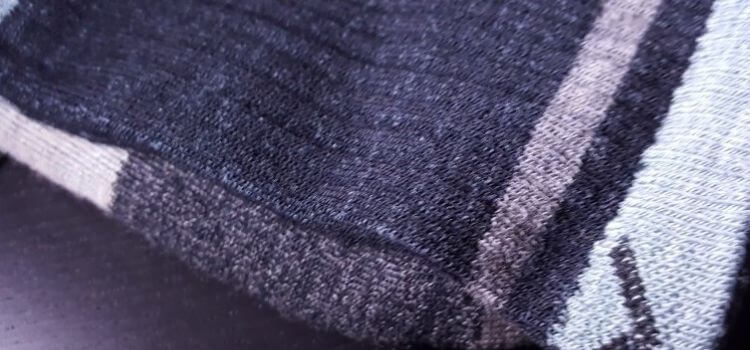
How Does Merino Wool Wick Away Moisture?
Merino wool’s moisture-wicking ability is a result of its unique fiber structure and properties, which work in concert to move moisture away from the skin and onto the fabric’s surface. This process helps keep you dry and comfortable even in sweaty or humid conditions. Here’s a more detailed explanation of how Merino wool wicks away moisture:
Hydrophilic Nature:
Merino wool fibers have a natural affinity for water, meaning they attract and absorb moisture. When you sweat, the moisture from your skin is quickly absorbed by the wool fibers.
Capillary Action:
Merino wool fibers have microscopic channels or capillaries between them. These capillaries allow moisture to move along the length of the fibers, effectively drawing moisture away from the skin.
Absorption and Spreading:
As moisture is absorbed by the fibers, it spreads along the length of the threads and is distributed throughout the fabric. This spreading action increases the surface area of the material that is in contact with moisture.
Surface Evaporation:
Once the moisture is distributed across the fabric, it comes into contact with the air on the surface. This increased surface area facilitates the process of evaporation, during which the moisture changes from a liquid state to a vapor state and is released into the air.
Cooling Effect:
The process of evaporation requires energy, and this energy is drawn from your body in the form of heat. As a result, the moisture evaporation process has a cooling effect on your skin, helping to regulate your body temperature and keep you comfortable.
Quick-Drying:
The combination of absorption, capillary action, spreading, and surface evaporation results in quick-drying properties for Merino wool. The moisture is efficiently transported from the skin to the fabric’s surface, where it evaporates rapidly.
Continual Process:
Merino wool’s moisture-wicking process is ongoing as long as there is moisture present. This continual movement of water away from the skin helps to maintain a dry and comfortable environment.
Merino wool’s moisture-wicking ability is driven by its hydrophilic nature, capillary action, absorption and spreading surface evaporation, and the cooling effect of moisture evaporation. This unique combination of properties allows Merino wool to efficiently manage moisture, keeping you dry and comfortable in a range of activities and weather conditions.
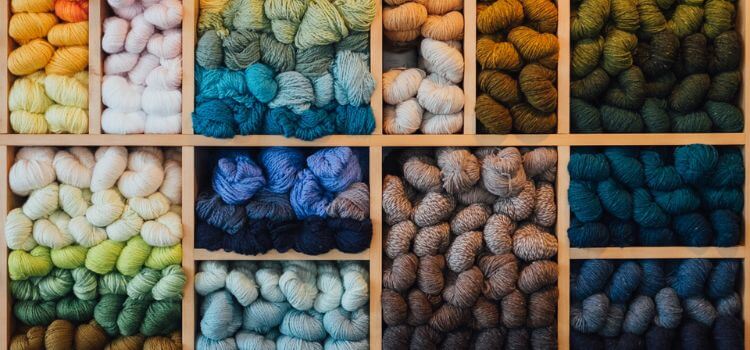
Why is Merino Wool Different?
Merino wool differs from other types of wool in several significant ways, including its fiber characteristics, properties, and uses. Here are some critical differences between Merino wool and different kinds of wool:
Fiber Fineness:
One of the most notable differences between Merino wool and other types of wool is the fineness of the fibers. Merino wool is prized for its beautiful yarns, which are much thinner than those of many other wool breeds. This finer diameter contributes to Merino wool’s softness and luxurious feel, making it comfortable to wear against the skin without causing itching or discomfort.
Softness and Comfort:
Due to its delicate fibers, Merino wool is known for its superior softness and comfort. This sets it apart from coarser wool varieties that may feel scratchy or rough against the skin. The fine fibers of Merino wool create a smooth and pleasant texture, making it a popular choice for next-to-skin garments and accessories.
Insulation and Temperature Regulation:
Merino wool has excellent natural insulation properties. Its fine fibers create a layer of trapped air that helps regulate body temperature by providing warmth in cold conditions and breathability in warm conditions. Other wool types may have varying levels of insulation but offer a different level of temperature regulation than Merino wool.
Moisture-Wicking:
Merino wool is renowned for its moisture-wicking capabilities. Its fine fibers can absorb moisture and wick it away from the skin, keeping you dry and comfortable. This feature is particularly beneficial in both hot and cold weather. While other wool types may have moisture-wicking properties, Merino wool’s fine fibers enhance its effectiveness in this regard.
Sets Apart:
Merino wool has natural antimicrobial properties that make it resistant to odors caused by bacteria. This sets it apart from some other wool varieties that might be more prone to retaining odors after extended wear.
Range of Clothing:
Merino wool is versatile and suitable for a wide range of clothing and accessories, including base layers, sweaters, socks, and outdoor gear. Its softness, comfort, and performance attributes make it an attractive choice for various applications. Other wool types might be better suited for specific uses, such as outerwear or heavy garments.
Breeding and Origin:
Merino sheep, known for their fine wool, have been selectively bred over generations to produce the high-quality fibers found in Merino wool. Other wool breeds, while still valuable for their wool, may have different characteristics and purposes based on their breeding and origin.
Merino wool stands out from other types of wool due to its delicate fibers, exceptional softness, temperature-regulating properties, moisture-wicking capabilities, odor resistance, versatility, and specialized breeding. These differences make merino wool a sought-after choice for a wide range of garments and products that prioritize comfort, performance, and luxury.
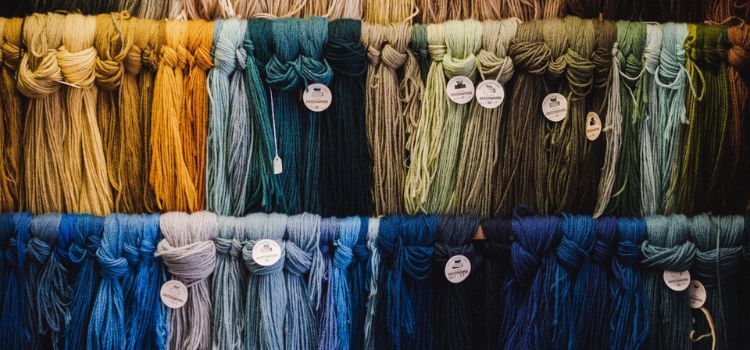
Is Merino Wool Breathable?
Yes, Merino wool is breathable. Its natural breathability is one of the notable characteristics that contribute to its comfort and versatility. The breathability of Merino wool is attributed to its unique fiber structure and properties, which allow air and moisture to move freely through the fabric. Here’s how Merino wool achieves breathability:
Fiber Structure:
Merino wool fibers are inherently breathable due to their pleasing and crimped structure. The crimped fibers create small air pockets within the fabric, allowing for air circulation. These air pockets act as natural insulators, providing warmth in cold conditions and allowing excess heat to escape in warm conditions.
Air Circulation:
The spaces between Merino wool fibers facilitate air circulation, allowing fresh air to flow in and around the fabric. This constant exchange of air helps regulate body temperature and prevents the accumulation of heat and moisture against the skin.
Moisture Management:
Merino wool’s moisture-wicking properties also contribute to its breathability. As you sweat, the wool absorbs moisture and moves it away from your skin. This moisture is then released on the fabric’s surface, where it can evaporate. This dual process of moisture management and evaporation helps keep you dry and comfortable.
Temperature Regulation:
The breathability of Merino wool aids in temperature regulation. In hot weather, excess heat is released through the fabric, preventing overheating. In cold weather, the trapped air pockets provide insulation, helping to retain body heat.
Comfort in Layering:
The breathability of Merino wool makes it an excellent choice for layering. When worn as a base layer, it efficiently moves moisture away from the skin, preventing sweat from becoming trapped and causing discomfort.
Types of Clothing:
Merino wool’s breathability makes it suitable for various types of clothing and products, from activewear to everyday garments. It offers comfort in a wide range of weather conditions.
Merino wool’s breathability is a result of its fiber structure, air circulation, moisture management, temperature-regulating properties, and the ability to maintain comfort during layering.
These qualities make Merino wool a preferred choice for those seeking breathable, comfortable, and functional clothing options.
Does Merino Keep You Cool
Yes, merino wool has remarkable temperature-regulating characteristics that can help you stay cool. Merino wool, although being a warm and insulating fabric, has a unique structure that allows it to draw moisture away from the body and release it into the air, facilitating evaporation and cooling.
It effectively removes perspiration and heat from your skin, which is very useful in hot weather.
Merino wool fibers may absorb a substantial quantity of moisture while remaining dry and pleasant.
Sweating draws moisture away from your body, and the fabric releases heat as it dries, helping to cool you down.
Merino wool is also naturally breathable, allowing air to flow and aiding in temperature management.
It’s a flexible fabric that adapts to different weather situations, making it an excellent choice for both warm and cold locations. Merino wool’s effective moisture management characteristics can help keep you cool and sweat-free, whether you’re trekking in the sun or engaged in strenuous physical activity.
Is Merino Wool Odor-Resistant?
Yes, Merino wool is naturally odor-resistant. One of the remarkable qualities of Merino wool is its ability to resist the development of odors even after prolonged wear.
This attribute is due to the unique structure and composition of the wool fibers, which create an environment that discourages the growth of odor-causing bacteria. Here’s how Merino wool achieves its odor-resistant properties:
Natural Antimicrobial Properties:
Merino wool contains natural antimicrobial properties that inhibit the growth of bacteria. These bacteria are responsible for producing odors when they break down sweat and other substances on the skin. By preventing the proliferation of bacteria, Merino wool helps keep unwanted odors at bay.
Moves Away Moisture:
Merino wool’s moisture-wicking capabilities play a role in odor resistance. When you sweat, the wool absorbs the moisture and moves it away from your skin. Since odor-causing bacteria thrive in damp environments, removing moisture reduces the conditions that promote bacterial growth and odor development.
pH Regulation:
Merino wool helps regulate the pH of your skin. Bacteria responsible for causing odors tend to thrive in more alkaline environments. Merino wool’s pH-regulating properties create an environment that is less conducive to the growth of these bacteria, further contributing to odor resistance.
Microscopic Structure:
The fine, crimped structure of Merino wool fibers creates tiny pockets of air within the fabric. These pockets of air allow for efficient air circulation and moisture evaporation. The rapid evaporation of moisture helps keep the material dry, which in turn reduces the likelihood of odor-causing bacteria taking hold.
Less Frequent Washing:
Due to its odor-resistant properties, Merino wool garments require less frequent washing compared to other materials. This not only conserves water and energy but also prolongs the life of your clothing.
Long-Lasting Freshness:
Even after extended wear, Merino wool garments tend to retain their freshness. This is especially valuable for outdoor activities, travel, and situations where frequent washing may need to be more convenient.
Merino wool’s natural antimicrobial properties, moisture-wicking capabilities, pH regulation, microscopic structure, and reduced need for washing all contribute to its odor-resistant qualities.
Choosing Merino wool clothing can help you stay comfortable and confident, even during active pursuits or in warm conditions where sweating is common.
Is Merino Wool Hypoallergenic?
Merino wool is often considered hypoallergenic, but it’s important to note that individual sensitivities can vary.
Hypoallergenic materials are those that are less likely to cause allergic reactions in most people.
While Merino wool is generally well-tolerated by many individuals, it’s still possible for some people to experience allergic reactions or sensitivities to wool fibers, including Merino wool. Here’s what you need to know about Merino wool’s hypoallergenic properties:
Natural Fiber:
Merino wool is a natural fiber derived from the fleece of Merino sheep. It doesn’t contain synthetic chemicals or additives that could trigger allergic reactions in sensitive individuals, making it a favorable choice for those looking for natural, hypoallergenic options.
Softness and Fine Fibers:
Merino wool is known for its refined and soft fibers. Compared to coarser wools, Merino wool’s finer texture reduces the potential for irritation or itching when worn against the skin. This softness can be more comfortable for individuals with sensitive skin.
Lack of Synthetic Additives:
Unlike some synthetic fabrics that might contain dyes, finishes, or chemical treatments that could cause skin reactions, Merino wool is less likely to cause irritation due to its natural composition.
Moisture-Wicking and Breathability:
Merino wool’s moisture-wicking and breathable properties can be advantageous for individuals with allergies or sensitivities. It helps keep the skin dry, reducing the risk of irritation caused by prolonged moisture exposure.
Individual Variability:
While Merino wool is generally well-tolerated, some individuals may have sensitivities or allergies to wool fibers, including Merino wool. Allergies can vary from person to person, and some people may experience itching, redness, or other skin reactions when in contact with wool.
Precautions:
If you have a known wool allergy or sensitivity, it’s advisable to perform a patch test before wearing Merino wool directly against your skin. This involves wearing the fabric in a small, inconspicuous area for a short period to determine if any skin reactions occur.
Layering:
If you’re concerned about potential sensitivities, consider layering Merino wool garments over a lightweight, breathable base layer. This can create a barrier between your skin and the wool, reducing direct contact and potential irritation.
Merino wool is generally considered hypoallergenic and suitable for many individuals. It’s essential to be aware of your own skin’s sensitivities and to take precautions if needed.
If you have a history of wool allergies or sensitivities, it’s advisable to test Merino wool against your skin before wearing it for an extended period.
Is Merino Wool Sustainable?
Yes, Merino wool is a relatively sustainable choice in the realm of textiles. The sustainability of Merino wool is attributed to several factors that contribute to its lower environmental impact compared to some other synthetic materials and even conventional wool. Here are some reasons why Merino wool is often regarded as a sustainable option:
Renewable Resource:
Merino wool comes from Merino sheep, which are shorn annually to harvest their fleece. This process is renewable and does not harm the sheep. The sheep naturally regrow their wool, making it an ongoing resource.
Biodegradability:
Merino wool is biodegradable, meaning it naturally decomposes over time. This characteristic reduces the environmental burden associated with waste disposal compared to synthetic fibers that can persist in landfills for a long time.
Low Energy Consumption:
The production process of Merino wool requires relatively low energy inputs compared to the manufacturing of synthetic fibers. Less energy consumption contributes to a lower carbon footprint.
Low Water Usage:
Merino sheep are often raised in areas with abundant grasslands and natural water sources. Their grazing habits contribute to maintaining these ecosystems, and they require relatively minimal additional water beyond natural rainfall.
Regenerative Agriculture:
Some Merino wool producers practice regenerative agricultural methods that promote soil health, biodiversity, and carbon sequestration. These practices contribute to a more sustainable and resilient ecosystem.
Longevity and Durability:
Merino wool garments are known for their durability and longevity. High-quality Merino wool products can last for years with proper care, reducing the need for frequent replacements.
Local Economies:
Merino wool production supports local economies in regions where sheep farming is a traditional practice. This can contribute to rural livelihoods and cultural heritage.
Natural Fiber:
Merino wool is a natural fiber, which aligns with the increasing demand for more eco-friendly and biodegradable textile choices.
Lower Microplastic Pollution:
Unlike synthetic fibers, Merino wool does not shed microplastic particles during washing. This reduces the risk of microplastic pollution in waterways.
Recyclability:
While less common, Merino wool can also be recycled into new products, further extending its lifespan and reducing waste.
It’s important to note that the sustainability of Merino wool can vary based on factors such as farming practices, production methods, and supply chain transparency. Choosing certified organic, ethically produced, and environmentally responsible Merino wool products can enhance the overall sustainability of your choice.
Merino wool offers several sustainability benefits compared to synthetic materials, and its renewable nature, biodegradability, low energy consumption, and potential for regenerative agriculture contribute to its reputation as a more sustainable textile option.
Merino wool, with its unique combination of properties, is a strong contender for hot-weather clothing, offering a range of benefits that contribute to comfort and performance in warm conditions.
While it might not be the absolute best choice for every individual and situation, its versatility and a multitude of positive attributes make it a valuable option for staying relaxed and comfortable during hot weather.
The Positive Effects of Wearing Merino Wool in Hot Weather:
The fine fibers and structure of merino wool enable air circulation, which aids in temperature regulation.
It effectively absorbs and moves moisture away from the skin, reducing irritation.
Merino wool responds to changing temperatures, allowing you to stay comfortable in a variety of settings.
Its dense construction provides some natural UV protection for activities that need exposure to the sun.
Merino wool inhibits the formation of odor-causing germs, allowing for prolonged wear without unpleasant odors.
It dries fast, reducing the discomfort of wet garments.
Despite its ability to retain heat, Merino wool is smooth and comforting against the skin.
Its regenerative nature and biodegradability are compatible with environmentally friendly textile options.
The Negative Effects of Wearing Merino Wool in Hot Weather:
Because of the particular nature of the fiber, merino wool clothes can be more expensive than other textiles.
Ultra-fine Merino wool clothes may be more fragile and susceptible to damage than coarser textiles.
While more possibilities are becoming accessible, the range of styles and designs may be limited in comparison to other materials.
Other Fabrics Good for Hot Weather:
Cotton:
Lightweight and breathable, cotton is a popular choice for hot weather due to its moisture absorption and comfort.
Linen:
Renowned for its breathability and moisture-wicking properties, linen is ideal for staying cool in hot climates.
Bamboo:
Bamboo-derived fabrics offer natural breathability, moisture-wicking, and a soft feel.
Synthetic Performance Fabrics:
Fabrics like polyester blends can offer moisture-wicking, quick-drying, and lightweight properties suitable for active pursuits.
Tencel:
Made from sustainable wood pulp, Tencel is breathable and moisture-absorbent, making it suitable for warm weather.
While Merino wool is a good choice for hot weather because of its mix of benefits, other materials such as cotton, linen, bamboo, and specific synthetic blends also provide comfort and performance in hot weather. The decision is ultimately determined by your interests, activities, and personal requirements.

